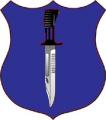Hi Rob,
No, its not 1:1. What's happening is more complicated. The deployed Battalion's LAVs/Strykers (I think it was around 60-70 or so that were originally sent) that can't be repaired at the 3rd-line level are being sent back to Canada, and non-infantry carrier variants in Canada are being converted to infantry-carriers and sent back to replace losses. AFAIK, the Strykers are now being used as much as possible for convoy-work, staying on the roads as much as possible. There are Armoured Corps (and I think maybe Artillery as well) drivers handling some of that.
The upgraded M-113s handle more and more of the the off-road field-ops - 40 of them are deploying to A-Stan to equip the Infantry Battalion there (3 Rifle Companies and a CS Company). The LAV-25 Coyotes, having all the recce/surveillance kit, are eventually (ie. planned) to be at least partially replaced by a recce variant of the Cheetah or RG 32 MRAP - there are still some Nyala MRAPs, but these are (or have been) taken out of service due to a shortage of spare parts.
There are 20 of the "new" Leopard 2A6Ms - a full 4-Troop Squadron - to handle both field ops and assist the Strykers in convoy duties. Both the Leopards and the M-113s were airlifted into Kandahar by rented An-124s (and damaged vehicles airlifted out the same way). The 15 Leopard 1's already there may be given to the Afghans. I can't tell you what damage they have caused to the roads, but a full Engineer Squadron is on hand to take care of such problems.
The Leopards have been operating in different places throughout Kandahar and Helmand Provinces at times, but the tanks spend more of their time doing convoy escort rather than offensive ops. It seems that those using Armour occur somewhat infrequently, for the most part. How much of that is by choice, and how much of that is due to logistical constraints, or what, I don't know. So for the Leopards, and the M-113s when all of them have arrived (if they haven't already), the optempo probably won't be too intense, except from time to time.
I'm not a logistics expert, but I can tell you that partial replacement of the Strykers with 20 Leopards and 40 M-113s will at least triple - maybe quadruple, even with many of the Strykers and light vehicles no longer in service - fuel and general POL requirements, since the Strykers are retained for the road-work, never mind having to stock completely new and substantial amounts of spare parts. That's not so much of a problem as it could have been because 2nd- and 3rd-line Logistics for the multinational NATO Brigade in Kandahar is handled by the Canadians anyway, but it certainly increases the load considerably.
Spare parts have been the only significant logistical problem that I am aware of, and that's just been because as one vehicle has been found inadequate for Afghanistan, it is replaced by another, and an entire set of Class IX stocks has to be replaced as a new vehicle replaces it: so...from Iltis to G-Wagen to Nyala (it was replaced because the manufacturer couldn't provide sufficient spare parts to meet demand) to LAV-III/Stryker and now M-113 TLAV as well, and also Leopard 1 to Leopard 2; so it's no wonder spares are a bit dicey at times when entire vehicles models are being replaced so quickly.
There are 82 armoured heavy trucks (bought in 2006) in Kandahar - of which 12 are tank transporters. They supplement dozens of unarmoured 10-tonners (Steyrs if I remember correctly). When the MBTs were sent over, the Support Group was augmented accordingly, and presumably have been further augmented as the M-113's have arrived. Bulk fuel has not been a problem, and AFAIK, neither has been packaged fuel. I think the US handles a great deal of the logistics load in Kandahar anyway.
There should be a full Basic and a full Maintenance load of fuel, parts, and ammo once the stocks have all been brought in (mainly by air); that may have already been accomplished, but don't quote me on that. There is a ton of Class VI; apparently you can buy just about anything on KAB. I suspect that this is largely (but not entirely) the work of the US. Lots of Class IV (even pre-fab concrete forms for building bunkers), and of course, Class X for reconstruction and humanitarian work. Supply just does not seem to be an issue in particular, publicly at least - so far.
Practically everything is flown in, and US, NATO, and rented Russian and Ukrainian transports coming in and out of Kandahar. Land transport across Pakistan to Quetta and then to Kandahar, of course, is not an option. Supposedly there are something like 20-30,000 troops based out of Kandahar - most of them US.
It's a really intensive logistics effort, in short.
The Stryker's just don't have a good time of it in the mud. I remember on the first Ex that I was ever in a LAV (the 6x6 LAV-1), it got stuck in a creek-bed. The LAV-III Stryker has become a real problem at times in Afghanistan, and when some of them have gotten stuck - way out in the boons - they've had to blow them up before nightfall when they couldn't get them unstuck. Troops are making derisive videos of the Stryker getting stuck in the mud in both Canada and Afghanistan (soon they'll be making derisive vids of M-113's blowing up or something, or at least rattling and scrambling everyone inside). The Canadian Army has used three generations of LAV for 30 years now, and although it improves with time, it just can't seem to get past some mobility problems.







 The problem is, the Taleban sometimes operate in groups of 100, and in rare cases up to 400. When you've only got 3 Rifle Companies, a Tank Squadron, and an Engineer Squadron, and you're 50-100 klicks from base, leaving a Platoon out in the open to keep a grip on a stuck vehicle is just baiting the Taleban's trap for them.
The problem is, the Taleban sometimes operate in groups of 100, and in rare cases up to 400. When you've only got 3 Rifle Companies, a Tank Squadron, and an Engineer Squadron, and you're 50-100 klicks from base, leaving a Platoon out in the open to keep a grip on a stuck vehicle is just baiting the Taleban's trap for them.






 "A Sherman can give you a very nice... edge."- Oddball,
"A Sherman can give you a very nice... edge."- Oddball, 
 (sad, isn't it?) for cross-country ops there.
(sad, isn't it?) for cross-country ops there. 

Bookmarks